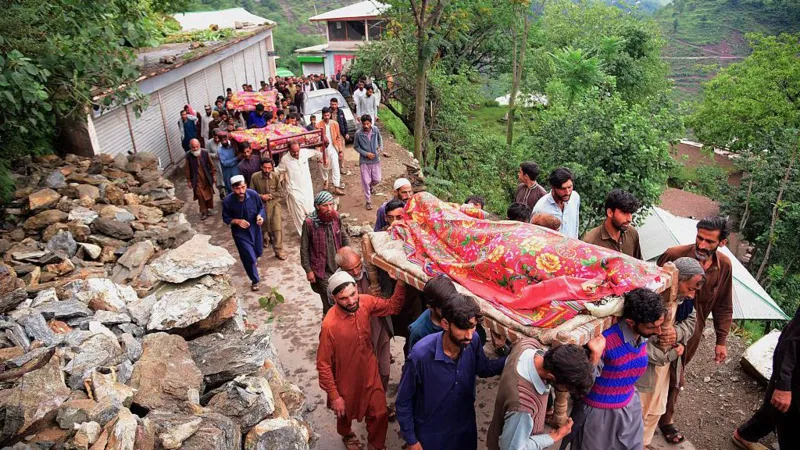Flash Floods Kill More Than 300 in Pakistan and Pakistan-Administered Kashmir
Flash floods have wreaked havoc across Pakistan and Pakistan-administered Kashmir, leaving more than 300 people dead and thousands displaced. The disaster has triggered a humanitarian crisis as heavy monsoon rains continue to lash the region, destroying homes, sweeping away roads, and cutting off entire communities from aid and rescue efforts.
Rising Death Toll and Widespread Damage
According to official reports, the death toll has crossed 300, with women and children among the victims. Many rural villages have been completely submerged, while landslides triggered by torrential rains have buried homes in mountainous areas of Azad Jammu and Kashmir (AJK). Rescue workers are facing immense challenges in reaching remote areas due to collapsed bridges, damaged roads, and continuous rainfall.
The flash floods have also caused significant damage to crops, livestock, and local infrastructure. With many families relying on agriculture for their livelihoods, the destruction of farmland and food supplies is raising fears of food insecurity in the coming weeks.
Relief Efforts and Government Response
The National Disaster Management Authority (NDMA), along with the Pakistan Army and local rescue teams, is working around the clock to evacuate people to safer locations. Temporary shelters have been set up for displaced families, while medical teams are providing emergency care to the injured.
The government of Pakistan has appealed for international assistance, requesting urgent support in the form of tents, food supplies, medicines, and clean drinking water. Aid organizations, including the Red Crescent and international NGOs, have also begun mobilizing relief operations.
Climate Change and Rising Flood Risks
Experts point out that extreme weather events like these floods are becoming more frequent in Pakistan due to climate change. Rising global temperatures are causing unpredictable monsoon patterns, heavier-than-usual rainfall, and accelerated glacier melting in the northern regions. Pakistan, already vulnerable due to limited infrastructure and high population density in flood-prone areas, continues to face severe risks from climate-driven disasters.
Environmentalists stress the need for long-term adaptation strategies, including better flood management systems, early warning networks, and climate-resilient infrastructure to protect vulnerable communities.
International Reactions and Support
The tragedy has drawn international attention, with neighboring countries and global humanitarian agencies expressing solidarity. The United Nations and relief partners are preparing coordinated assistance to help Pakistan manage this crisis.
Social media is also playing a crucial role, with hashtags like #PakistanFloods and #PrayForPakistan trending globally as people share images, updates, and donation links to support the victims.
The devastating flash floods in Pakistan and Pakistan-administered Kashmir have once again highlighted the country’s vulnerability to climate disasters. With more than 300 lives lost and millions at risk, urgent relief efforts and long-term climate adaptation measures are crucial. The international community’s timely support will be vital in helping Pakistan recover from one of the deadliest monsoon floods in recent years.
✅ Keywords to Include Naturally in Article:
- Flash floods in Pakistan 2025
- Pakistan-administered Kashmir floods
- Pakistan flood death toll
- Pakistan monsoon rains disaster
- Climate change and Pakistan floods
- Pakistan flood relief efforts




